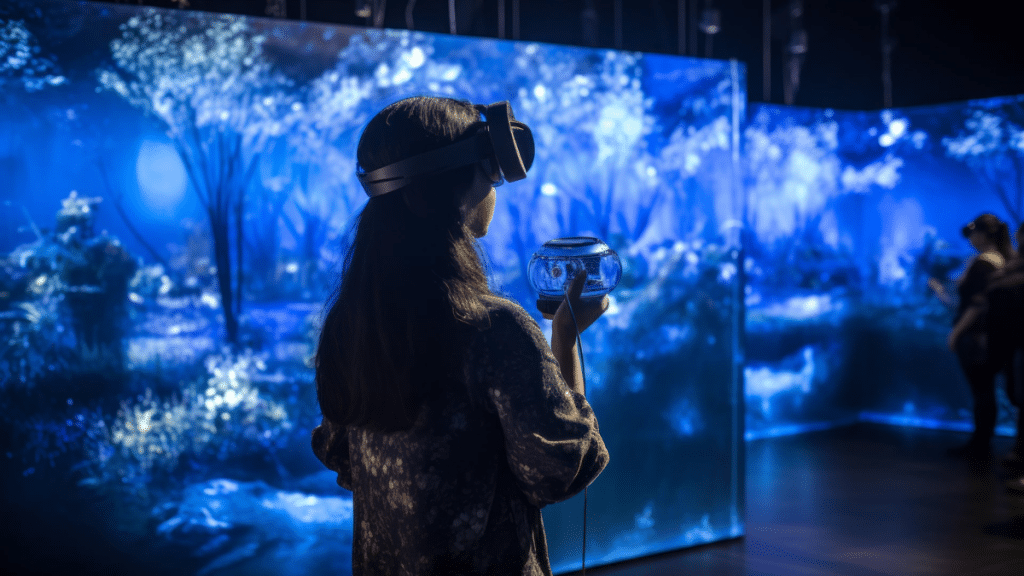Over the last few years, there have been amazing changes around the world in the creation, modification, and engagement with images. The lines dividing photography, animation, and computer-generated graphics are becoming increasingly flexible and offering new opportunities for both producers and consumers. This change can be observed in two new technologies: animated pictures which add motion to static images, and advanced AI-driven photo generators that render images based on user input text. Let us look at how these inventions are changing the creation of digital content and how visual communication will be in the future.
The Rise of Animated Still Images
Traditional photography freezes a moment in time. We can now create dynamic interactive versions of these static captures through new technologies. The idea of speaking pictures has shifted from sheer novelty to advanced artistic tool, allowing photographers and digital creatives to manufacture movement and character into what could be otherwise lifeless images.
The technology involves facial recognition algorithms as well as animation techniques to track and manipulate key facial features. It detects elements such as eyes, mouth and expression lines and uses audio tonal recognition of speech or pre-loaded animations to add realistic motion. The result is eerily natural-looking photos that talk, blink, smile and emote.
The uses go beyond just entertainment. Old photographs can make ancestors come alive; for family historians, this can lead to emotional bonds across generations. Museums are using this technology to create interactive exhibits where historical figures speak directly to the museum-goer. The marketing professionals also use talking photo to deeepen advertisement engagement and grab more attention in crowded digital spaces.
AI Photo Generation: Creating Images from Words
As talking photos are developed the field of AI-powered image generation has demonstrated remarkable progress. AI photo generators today use deep learning models that have been trained on vast image databases to produce new visual creations from text inputs alone.
These systems use advanced neural networks specifically diffusion models and transformers which understand how textual concepts relate to their visual representations. The AI system takes apart user prompts such as “sunset over a misty mountain range with a cabin in the foreground” by analyzing its elements and understanding their spatial and stylistic relationships before generating a distinctive visual representation of that scene.
The technology revolutionized visual creation by making professional-level image production accessible to anyone. People who lack formal artistic education now can create professional-standard images for both personal endeavors and commercial purposes. People can now bring abstract ideas to life through visualization because this widely available technology has initiated a creative revolution.
Technical Foundations and Recent Breakthroughs
Both talking photos and AI image generation rely on similar foundational technologies: The core technologies behind talking photos and AI image creation include computer vision and deep learning enhanced by progressively complex neural networks. Development has moved forward at a rapid pace because of recent breakthroughs in these fields.
The transformer architecture was originally designed for natural language processing yet demonstrates impressive performance when used for visual tasks. The integration of language processing with visual AI systems has led to interfaces that better understand user context and intentions while becoming more intuitive.
Diffusion models transformed the AI photo generator through their technique of noise removal from random patterns until they form coherent images. The method delivers superior detail and realism in results compared to earlier approaches while permitting greater accuracy in managing output generation.
Ethical Considerations and Challenges
The advent of these potent technologies presents considerable ethical issues that maintain to trouble developers and users. It has become apparent that the ability to have photos “speak” words rumoured to have never been spoken can lead to a legitimate potential for misinformation. Furthermore, AI-generated photorealistic images can be employed to create false recollections of events that didn’t transpire.
In response, there are systems of content verification developing, including digital watermarking, blockchain-based authentication and AI tools to detect synthetic media. Nevertheless, countermeasures have considerable challenges hijacking persuasive discourse generated via advancement technologies.
Privacy issues arise when rationalizing use of facial manipulation technology since many of these systems collect significant information regarding a person’s face and facial expressions marginalizing questions of consent and data ownership. Regulatory structures residue behind these technologies and their realities.
Conclusion
The move from still images to moving, visually-rich AI-infused experiences marks one of the biggest changes in visual communication since photography was first invented. As talking photos become more of a reality and the imaging-generating capabilities of AI continue to expand, we are entering a new phase in visual experiences where the relationship between reality and created imagery is increasingly blurred.
For creators, these technologies are providing tools that were unavailable even just a couple of years ago to communicate big ideas and emotions. For audiences, they expand the range of options at their disposal to experience visual material. While ethical dilemmas still exist, the creativity these technologies allow informs ecosystem that will continue to propel visual experiences and new modes of telling stories digitally.
